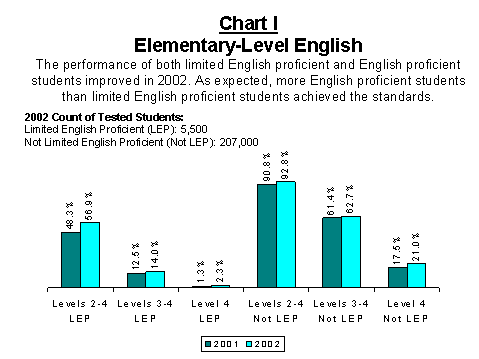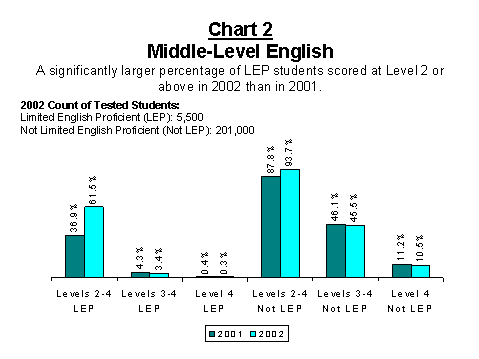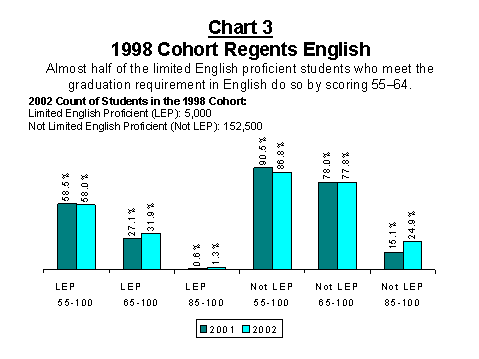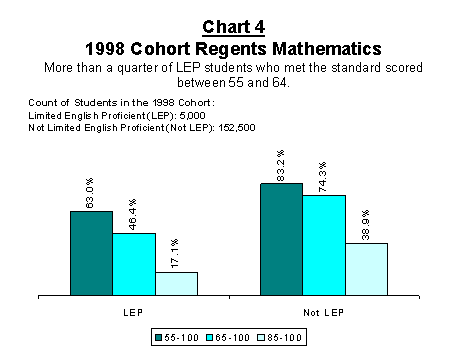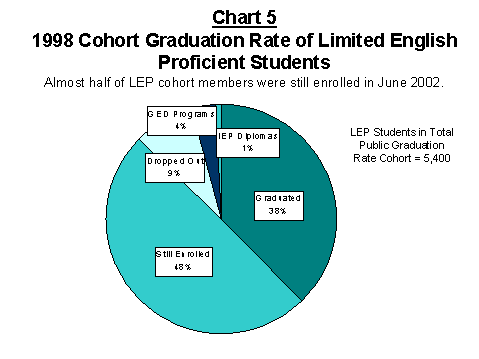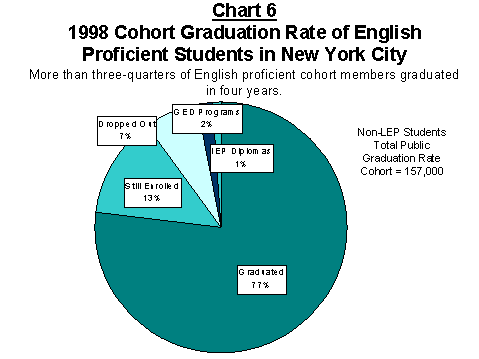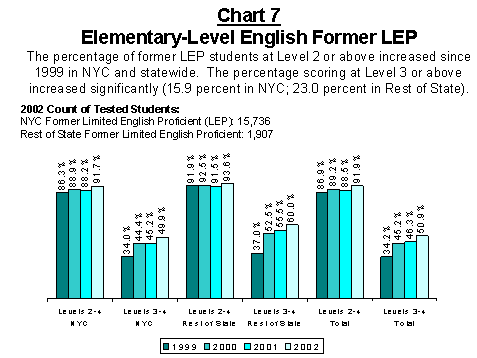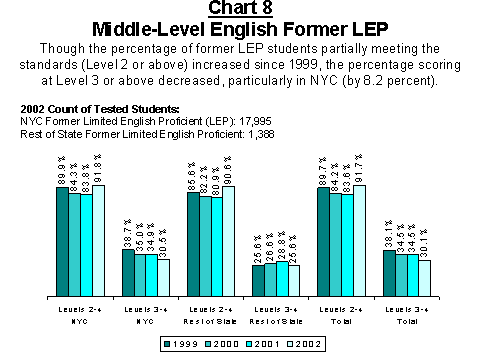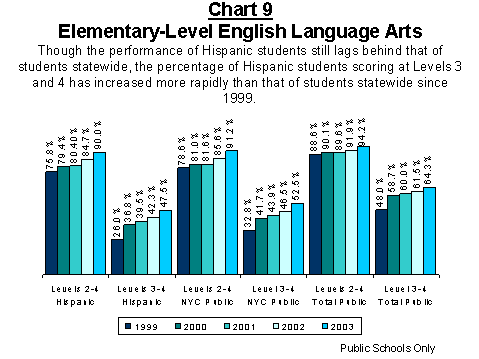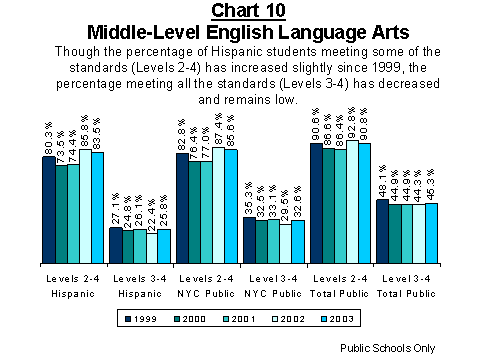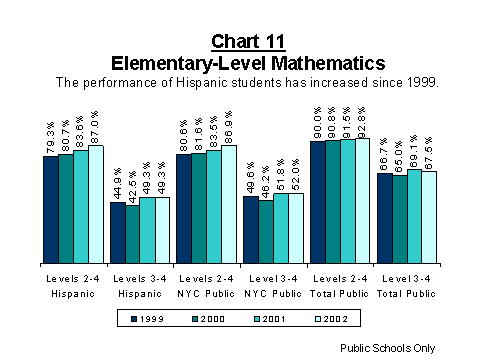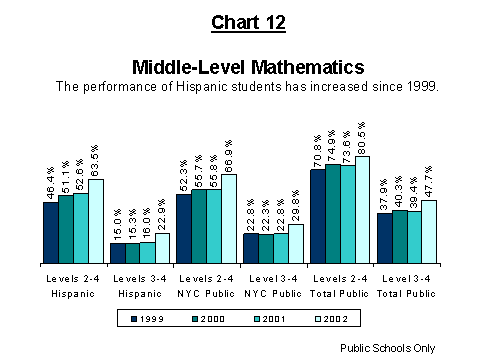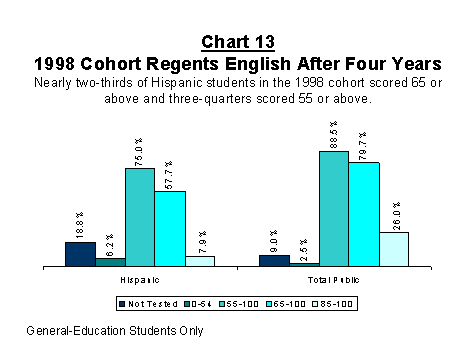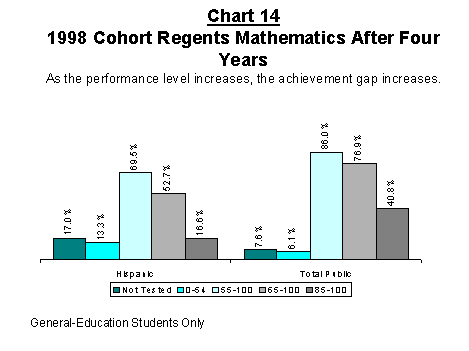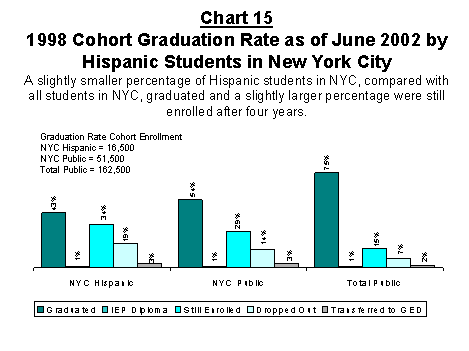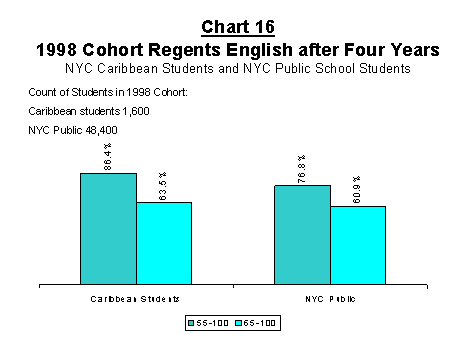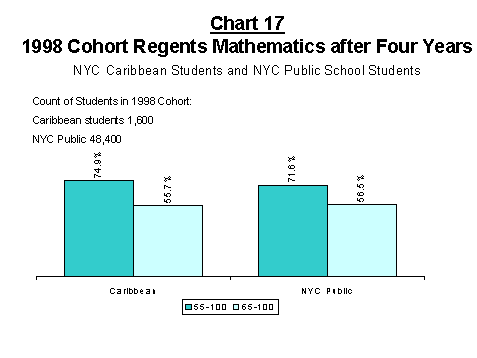Meeting of the Board of Regents | June 2003
|
|
THE STATE EDUCATION DEPARTMENT / THE UNIVERSITY OF THE STATE OF NEW YORK / ALBANY, NY 12234 |
|
TO: |
The Honorable the Members of the Board of Regents |
|
FROM: |
James A. Kadamus |
|
COMMITTEE: |
Elementary, Middle, Secondary and Continuing Education |
|
TITLE OF ITEM: |
1998 Cohort Data on Limited English Proficient Students and Students from English-Speaking Caribbean Countries |
|
DATE OF SUBMISSION: |
June 4, 2003 |
|
PROPOSED HANDLING: |
Discussion |
|
RATIONALE FOR ITEM: |
Review of Regents Policy |
|
STRATEGIC GOAL: |
Goals 1 and 2 |
|
AUTHORIZATION(S): |
SUMMARY:
In February we provided you with a comprehensive status report on limited English proficient (LEP) students. As comprehensive as that report was, at that time we did not have the achievement data for the 1998 cohort of LEP students. That data is now available and is included as a series of charts in Attachment A. LEP students in the data included in this report are defined as "pupils who by reason of foreign birth or ancestry speak a language other than English, and either understand and speak little or no English; or score below the 40th percentile, or its equivalent as determined by the commissioner, on an English language assessment instrument approved by the commissioner. In April, the Board adopted a new definition for LEP students that became effective on May 2, 2003.
We have developed the following questions to focus your discussion on this topic:
- How does the performance of LEP students compare with the performance of students who are English proficient on the elementary- level and middle-level English language arts tests? (see charts 1 and 2)
- How does the performance of LEP students in the 1998 cohort compare with the performance of English proficient students on the Regents examinations in English and mathematics? (see charts 3 and 4)
- How does the 1998 cohort graduation rate of LEP students compare with the cohort graduation rate of English proficient students? (see charts 5 and 6)
- How do students who were formerly designated as LEP perform on the elementary-level and middle-level English language arts tests in comparison with those who are English proficient? (see charts 7 and 8 for this data and charts 1 and 2 for the English proficient data)
- What do the data tell us about the performance of all Hispanic students on the elementary-level, middle-level and Regents-level English and mathematics examinations? (see charts 9-14)
- What is the graduation rate for the Hispanic students in the 1998 cohort in comparison with the graduation rate for all public students in New York City and for the total public? (see chart 15)
6. How do the students from the Caribbean perform on the Regents English and mathematics examinations in comparison with other students from the New York City public schools? (see charts 16 and 17)
We will continue to provide you with updates as additional information on these students becomes available.
Attachment
Attachment A
